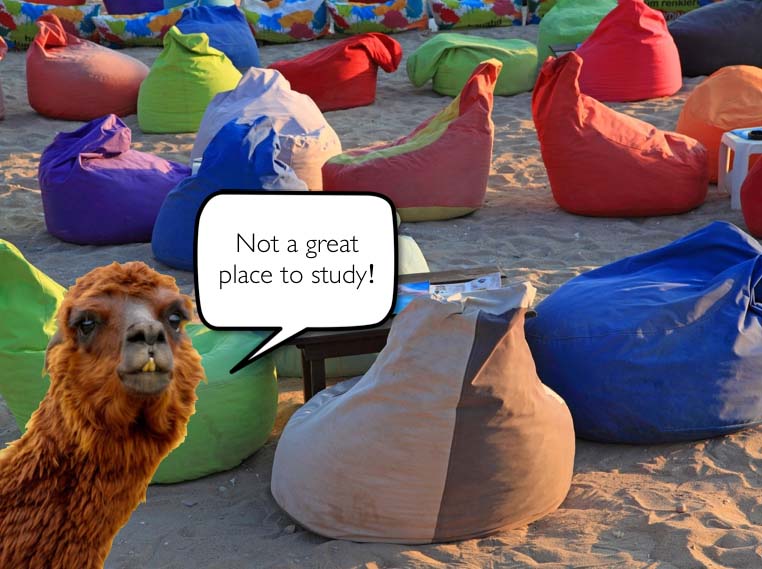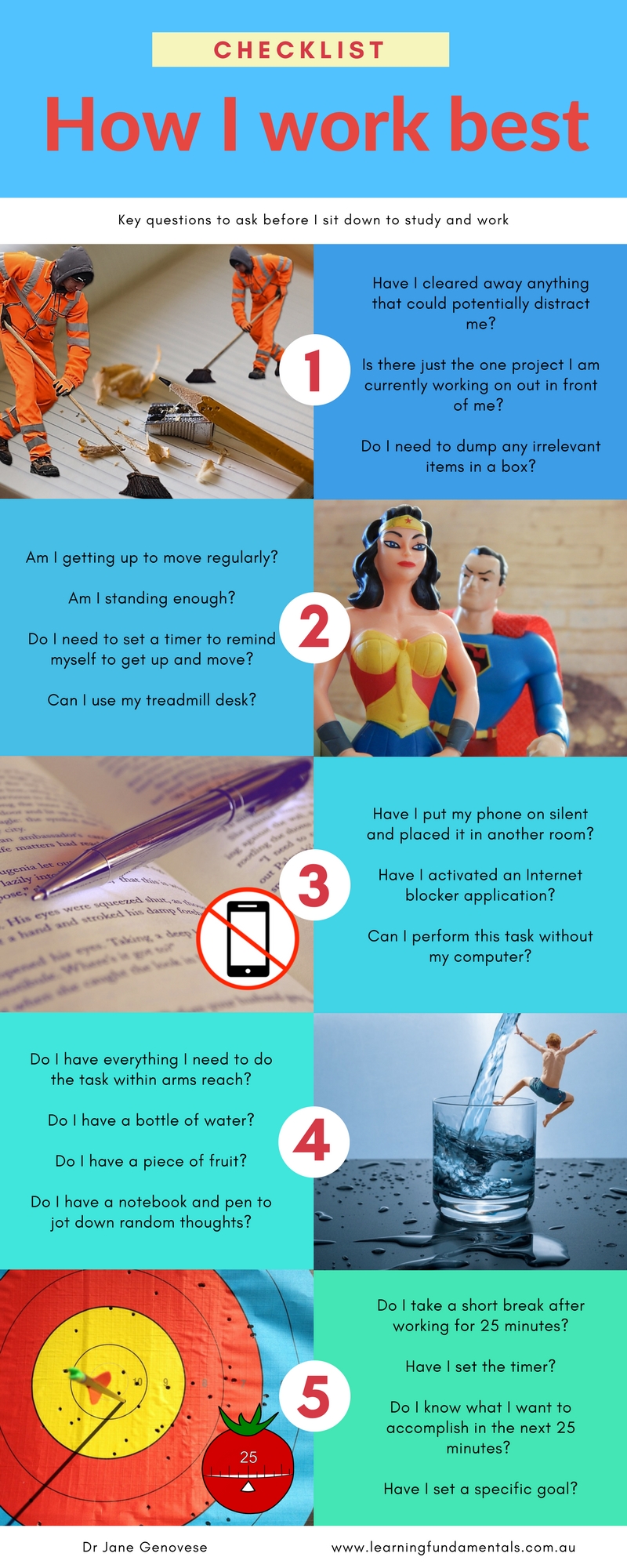
Do you want to study less and play more?
Then it’s time to refine the conditions you work in and the tools you use.
Just like the fairytale character Goldilocks discovered a bowl of porridge that was just right, there are optimal study conditions that are just right and work best for you.
Simply by making some small changes to your study environment, you can sharpen your ability to focus, feel more comfortable in your space and potentially cut hours off your study time.
You don’t believe me? Feeling skeptical?
Well, let me tell you about how I used to study …
When I was in high school I would regularly study on my beanbag in my pyjamas. Sure, it was relaxing but it was a little too relaxing. I’d frequently lose my train of thought and end up taking a micro-nap.

I soon realised that I’d get a lot more work done if I’d have a shower, put on some nice clothes and shoes, and sit upright in a chair at a desk. What would take me 2 hours to do in the beanbag, I could complete in under 45 minutes in the right conditions and environment.
So how can you modify your study space so it’s ‘just right’ for you?
Here is a checklist to help you think about how you work best:
Temperature
Is your environment too hot or cold? Just right?
Lighting
Is it too dark? Too bright? Just right?
Desk
Do you have your own personal study space? Is there enough space to spread your books and papers?
Noise
Do you enjoy music? Do you need some background noise? Do you prefer total silence?
Posture
Are your feet flat on the floor? Are you sitting up right? Are you straining your neck or lower back?
Clutter
Do you get easily distracted and overwhelmed by clutter in your environment? Can you clear away the clutter?
Inspiration and beauty
Are there objects in your environment that inspire you (e.g. indoor plants and/or artwork)?
Movement
Are you getting up from your desk to move every 20 minutes? Have you considered using a standing desk or treadmill desk?
Equipment and stationery
Do you have everything you need within arms reach (e.g. pen, paper and healthy snacks)?
Technology
Do you manage technology effectively so it doesn’t derail you when you study (e.g. using internet blocker apps, turning your phone off and placing it in another room)?
Goals and intentions
Do you set a clear intention or specific goal before sitting down to study (e.g. “I will create a mind map on the fall of Rome for 20 minutes”)?
Eyes
Are you giving your eyes a break every 20 minutes (e.g. you look away from your books and off into the distance)?
Breaks
Do you take regular breaks when you study (e.g. you get away from your computer and go for a walk or take a power nap)? Do you need a timer to time your breaks and study sessions?
Food and drink
Do you get hungry and/or thirsty when you study? Do you have sufficient healthy snacks and plenty of water within arms reach?
Clothing
Do you feel comfortable in your clothing? Are they too tight? Too itchy? Too frumpy?
Sleep
Is there a clear demarcation between where you sleep and study (e.g. you avoid studying on your bed)? Are you getting enough sleep (at least 8 hours each night)? Do you stop using your phone at least 30 minutes before you go to sleep?
Celebrate
Do you celebrate and give yourself a break/reward when you finish a piece of work before moving onto the next thing you need to do?
At first glance, this list may seem overwhelming. But just know that you don’t need to tweak every condition all at once. In fact, I strongly recommend against a complete overhaul of your study space and routine. This rarely works.
So start small. Choose just one area to focus on, experiment with it and adjust accordingly. Then move onto another area.
Create a visual cue
You can create a visual cue to help you stay on track. For instance, I created an infographic highlighting the key areas I wanted to improve using Canva but if you prefer, you could create one by hand. It doesn’t have to be anything fancy.

This simple infographic reminds me of the new conditions and behaviours I want to establish as new habits.
If you focus on just one area each day on the checklist, within a few weeks you’ll have streamlined your study space to meet your optimal ‘Goldilocks’ conditions.

One thought on “How do you work best? A checklist to create the optimal study space and routine”
Comments are closed.